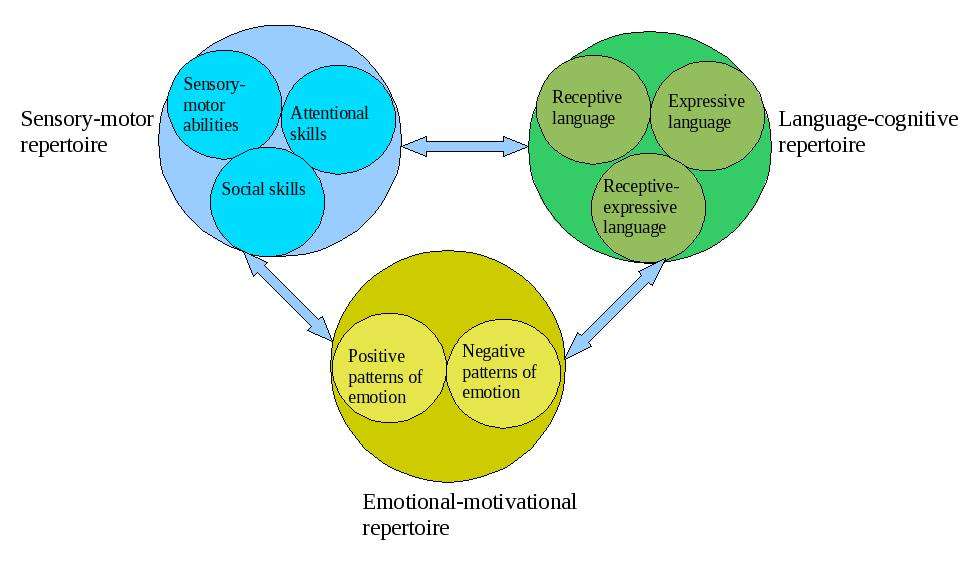Psychodynamic and humanistic perspectives have been remarkably essential in understanding behavior. Psychodynamic perspective focuses on the influence of unconscious psychological processes while humanistic perspective investigates the impact of our free will, the importance of personal worth, and the centrality of human values. The following discussions further delve into their distinctions.

What is Psychodynamic Perspective?
The psychodynamic perspective pertains to the therapeutic approach and theories developed by Sigmund Freud (the founder of psychoanalysis) and supported by his followers. The neo-Freudians agreed with the fundamental principles of the psychoanalytic theory such as the influence of the unconscious and childhood experiences. However, they disagreed with some of his concepts; generally, they deemphasized the role of sex and acknowledged the impact of social environment.
Some of the neo-Freudians are the following:
- Alfred Adler
Adler, an Austrian psychiatrist, developed “Individual Psychology”. He was initially a part of Freud’s inner circle of colleagues. However, Adler disagreed with Freud’s emphasis on sexual and aggressive urges. He believed that individuals are driven by feelings of inferiority in childhood and that they should be studied as a whole.
- Carl Jung
Jung, a Swiss psychiatrist, developed “Analytical Psychology”. He had a close friendship with Freud but it ended due to their differing concepts. Jung described Freud’s theory of the unconscious as incomplete and too pessimistic. For example, Jung suggested the existence of the “collective unconscious” which is transpersonal and deeper. However, Freud dismissed such concepts as being irrational.
- Karen Horney
Horney (“horn-eye”), a German psychoanalyst, is credited for her feminist psychology. She disagreed with the concept of “penis envy” ( Freud explained that young girls experience anxiety when they realize that they do not have a penis). Horney then explained that men go through “womb envy” (men are actually envious of women’s capability to bear children). She also believed that neurosis is attributed to the basic anxiety which stem from interpersonal relationships.
The core assumptions of the psychodynamic perspective are the following (Bornstein, 2020):
- Primacy of the Unconscious
The psychodynamic perspective explains that our psychological processes our largely unconscious. For instance, we are not consciously aware of most of our feelings, motives, memories, and other mental activities.
- Importance of Early Experiences
Psychodynamic theorists view childhood experiences, including those that occur during the first weeks of life as crucial in shaping personality. For instance, not experiencing sufficient care from a primary caregiver can negatively affect one’s behavior, even decades later.
- Psychic Causality
The psychodynamic perspective suggests that behavior is caused by certain biological and psychological processes. Hence, every thought, feeling, or motive does not just happen by chance; everything has a meaning. For instance, dreams are not merely meaningless images or stories, they may say something about your desires, fears, past, etc.

What is Humanistic Perspective
The humanistic perspective emphasizes free will, empathy, self-actualization, holistic approach, and the goodness of each human being. It is also known as the “third force”, it arose in the 1950s in response to psychoanalytic and behavioral perspectives which are described as too deterministic. For instance, it sees the psychodynamic perspective as having too much focus on the unconscious. It also sees behaviorism as having too much emphasis on reinforcement, punishment, and animal research. Humanistic psychologists include Abraham Maslow, Carl Rogers, and Fritz Perls.
The following are humanism’s basic assumptions (McLeod, 2020):
- People have free will
Humans have the capacity to choose how they will respond to stimuli. For instance, we can choose to be happy despite challenging situations.
- Humans are innately good and have the need to make themselves and others better
Good intentions are the driving force of behavior; however, individuals may deviate from their innate goodness when facing adverse situations. We can then change for the better and will ourselves to overcome challenges.
- Humans are motivated to self-actualize
People continuously seek to achieve growth, satisfaction, and fulfillment.
- Conscious subjective experiences are the most important
Instead of focusing on the unconscious, rewards and punishments, thinking, or the human brain, we should look into how people interpret events, each individual’s unique understanding of the world.
- Qualitative methods over quantitative methods
As compared to laboratory experiments and surveys, the use of diary accounts, open-ended questionnaires, in-depth and unstructured interviews and observations are more productive in studying behavior. Humans can be better understood by genuinely talking with them, being open, and empathetic.
- Comparative psychology does not explore humans’ unique properties
Humanism views studies on animals as insignificant since they do not tell us much about how humans feel, think, and experience events.
Difference between Psychodynamic Perspective and Humanistic Perspective
Definition
The psychodynamic perspective pertains to the therapeutic approach and theories developed by Sigmund Freud (the founder of psychoanalysis) and supported by his followers. It emphasizes the influence of the unconscious and childhood experiences in shaping one’s behavior. In comparison, the humanistic perspective emphasizes free will, empathy, potential, holistic approach, and the goodness of each human being. It is also known as the “third force”, it arose in response to both psychoanalytic and behavioral perspectives which are described as too deterministic.
Core Assumptions
The core assumptions of psychodynamic perspective are: primacy of the unconscious, importance of early experiences, and psychic causality (Bornstein, 2020). On the other hand, the basic assumptions of humanistic perspective are: people have free will, humans are innately good, we are motivated to self-actualize, conscious subjective experiences are more important, qualitative methods over quantitative methods, and rejection of comparative psychology (McLeod, 2020).
Psychologists
The neo-Freudians advanced the psychodynamic perspective which was based on Freud’s psychoanalysis. They include Adler, Jung, Horney, and Erikson. As for the humanistic psychologists, they include Maslow, Rogers, and Perls.
Psychodynamic Perspective vs Humanistic Perspective

Summary
- Both psychodynamic and humanistic perspectives seek to explain behavior and guide therapeutic processes.
- The psychodynamic perspective emphasizes the influence of the unconscious and childhood experiences in shaping one’s behavior.
- The humanistic perspective emphasizes free will, empathy, self-actualization, holistic approach, and the goodness of each human being
I have done extensive research on both the humanistic and psychodynamic theories. Here are my findings.

The differences between humanistic and psychodynamic theories.
Image Created With Canva
Psychodynamic vs. Humanistic Theories
Psychology is the study of the mind. There are several different ways to study the mind and all of them have their own significant contributions to the field. The psychodynamic view and the humanistic view are both unique in that they are almost complete polar opposites of one another. Both have made significant contributions and have been a platform for different perspectives, though they differ in their approaches completely. Both views must be explored and combined in order to keep advancing the study and treatment of the mind.
Differing Goals
The goals of psychodynamic and humanistic therapists are very different.
Goals of the Psychodynamic View
The psychodynamic view was developed by Sigmund Freud. He believed that behavior was deeply influenced by unconscious thoughts, impulses, and desires, especially concerning sex and aggression. His goal was to resolve the internal conflicts that lead to emotional suffering. Freud said that “patients could only expect to change their hysterical misery into common unhappiness.” The humanistic therapist would take a very different look at this.
Goals of the Humanistic View
The goals of the humanistic therapist differ from Freud’s psychodynamic view in that they seek to understand how people perceive themselves and experience the world. It is concerned with understanding subjective human needs. Humanists believe that conscious thoughts and feelings shape behavior. They believe in accountability and self-actuality, and that everyone can reach self-actuality by moving through Maslow’s hierarchy of needs. This differs from the Freudian school of psychodynamics because he did not believe that all of his patients could be happy.
On Psychodynamic Therapy
A patient is asked to be spontaneous and free-associate the random thoughts that pop into their mind; sometimes the therapist may give the patient a prompt or a word to begin their free association. Patients are also encouraged to put aside embarrassment and the urge to self-censor. The therapist then tries to identify what the patient might be repressing from their past, and how it may be affecting their present behavior.
— Psychology Today (Psychodynamic Therapy)
Predetermined Fate Versus Free Will
Humanists and psychodynamicists not only differ in their goals but also in their views on personality. The psychodynamic view has been interpreted by some as negative and pessimistic, whereas the humanistic view is that mostly all people are good.
Psychodynamics believes that behavior is determined, while the humanist believes that behavior is free choice and free will. In psychodynamics, motives are rooted in sex and aggression while humanists’ motives are tilted towards the pursuit of self-actualization.
Elements of Each Theory
Psychodynamics denotes three elements of the personality: Id, Ego, and Superego. The Id seeks pleasure, the Ego is the thinker and planner, and the Superego is the voice of reason.
Humanists are more simplistic, believing in a unified self and that “people just are who they are.”
Views on Human Development
Psychodynamics puts forth a very different view on child development from humanism.
Freudian View of Human Development
The Freudian and psychodynamic view of human development is based on psychosexual stages as follows:
- Oral (age 0-1) focuses on sucking and survival
- Anal (ages 1-3) focuses on potty training
- Phallic (ages 3-6) focuses on adult traits such as vanity and pride
- Genital (puberty and beyond) focuses on sexual instincts
Humanistic View of Human Development
The humanistic view is very different from Freud’s view of development and describes an ongoing development of self-image in which experiences shape self-image in a positive or negative way.
The photo above is a diagram of Maslow’s hierarchy of needs. This diagram is representative of the path to self-actualization, and is highly incorporated into humanistic beliefs.
Differing Therapeutic Techniques
The approach to therapy differs greatly between psychodynamic and humanistic therapy.
- The therapist’s role in psychodynamic therapy is authoritative, and they tend to determine what will be talked about during a session.
- The psychodynamic approach deals with unconscious thoughts and conflicts, usually stemming from repressed memories or sexual energy.
- In humanistic therapy, the therapist takes an objective role and listens to what the patient has to say. It is more non-directed and the patient can decide what will be discussed during the session.
- It is said in humanistic therapy, the therapist provides opportunities for change, but it is up to the patient to actively solve his or her own problems.
- The humanist therapist believes in conscious acts and that humans make their own decisions, not unconscious drives. They encourage responsibility for their actions by focusing on bringing emotions into the present and dealing with them.
A core tenet of humanistic therapy is that people are inherently motivated to fulfill their internal needs—and that each of us has the power to find the best solutions for ourselves and the ability to make appropriate changes in our lives, a concept known as self-actualization.
— Psychology Today (Humanistic Therapy)
Do Psychodynamic and Humanistic Therapies Have Anything in Common?
A lot of research has been done on these two very different approaches. However, there have been no new views that have combined humanism with psychodynamics to utilize the best of both. Science supports the idea that the conscious cannot function without the unconscious. By combining the humanistic and psychodynamic views to focus on the conscious and unconscious as equally responsible parts for the cause of psychological disorders, we could further research the brain and its behavior.
Which Method Is Better?
There is no right or wrong when it comes to different approaches to psychology. The main differences between the psychodynamic view and humanistic view are the goals, development, causes, and treatments; and in each area, both views have made significant contributions. By combining the two views into one harmonious holistic view, a healthier approach to treating the mind and psychological disorders could be formed. The new view would take all parts of the mind and body, conscious and unconscious, into consideration, leading to a stronger diagnosis and treatment in the end.
Sources and Further Reading
- Brody, Eugene B. “The Psychodynamic View of Human Behavior.” The Behavioral and Social Sciences and the Practice of Medicine, Butterworth-Heinemann, 21 Oct. 2013
- Contributors, WebMD Editorial. “What Is Humanistic Psychology and Humanistic Therapy?” WebMD, WebMD, https://www.webmd.com/mental-health/humanistic-psychology-and-humanistic-therapy.
- “Genital Stage.” Genital Stage – an Overview | ScienceDirect Topics, https://www.sciencedirect.com/topics/psychology/genital-stage.
- “Humanistic Therapy.” Psychology Today, Sussex Publishers, https://www.psychologytoday.com/us/therapy-types/humanistic-therapy.
- “Psychodynamic Therapy.” Psychology Today, Sussex Publishers, https://www.psychologytoday.com/us/therapy-types/psychodynamic-therapy.
This content is accurate and true to the best of the author’s knowledge and is not meant to substitute for formal and individualized advice from a qualified professional.
© 2010 Mandy
Verity on October 15, 2019:
This is, at best, *extremely* inaccurate on psychodynamic theory and approach and, at worst, an ill-informed gross misrepresentation of it. Psychodynamic theory/therapy is NOT negative in its assumptions or approach and it is most certainly not the case in any way whatsoever that the “therapy is authoritative” and that the therapist “tends to determine what will be talked about” — the opposite is the case, actually, because the psychodynamic therapeutic space by its very nature belongs to the person in therapy, not the therapist.
Jonathan on June 20, 2018:
This is very inaccurate. At the very least, it seems as though the author has confused a strictly psychoanalytic approach with psychodynamic therapies. Psychoanalytic therapists are not negative, but they do believe that your background influences your choices. They are STILL recognized as CHOICES – AKA: FREE WILL. The statement about research done on these therapies is false; each of these theories are very hard to study empirically.
Please do not use this as a reference.
Stephane Farley on June 09, 2018:
Thank you for sharing with us this has helped me have more faith in the system.
fofo on July 08, 2017:
very good and clear explaning
mrandersong on March 18, 2014:
It depends on the person. We all have different approaches to life and one approach might work for one person and not the other. I personally believe in Holistic theory because it works for me. The human mind is a very complicated place so to say one works better than the other is just arrogant.
kwj on February 23, 2013:
Thought provoking I will read more now.
anonymous on September 14, 2012:
This is a gross misrepresentation of psychodynamic therapy
anonymous on October 26, 2011:
It is very worthwhile reading this because it is succinct, clear and thought provoking.
Varelli on July 14, 2011:
What an intriguing subject. Great lens, thumbs up!
moonlitta on July 05, 2011:
That is helpful and well explained…Squid Angel blessed too:)
Lorelei Cohen from Canada on June 23, 2011:
You have done an absolutely amazing job on this lens. Thank you for putting so much effort into this. It shows.




